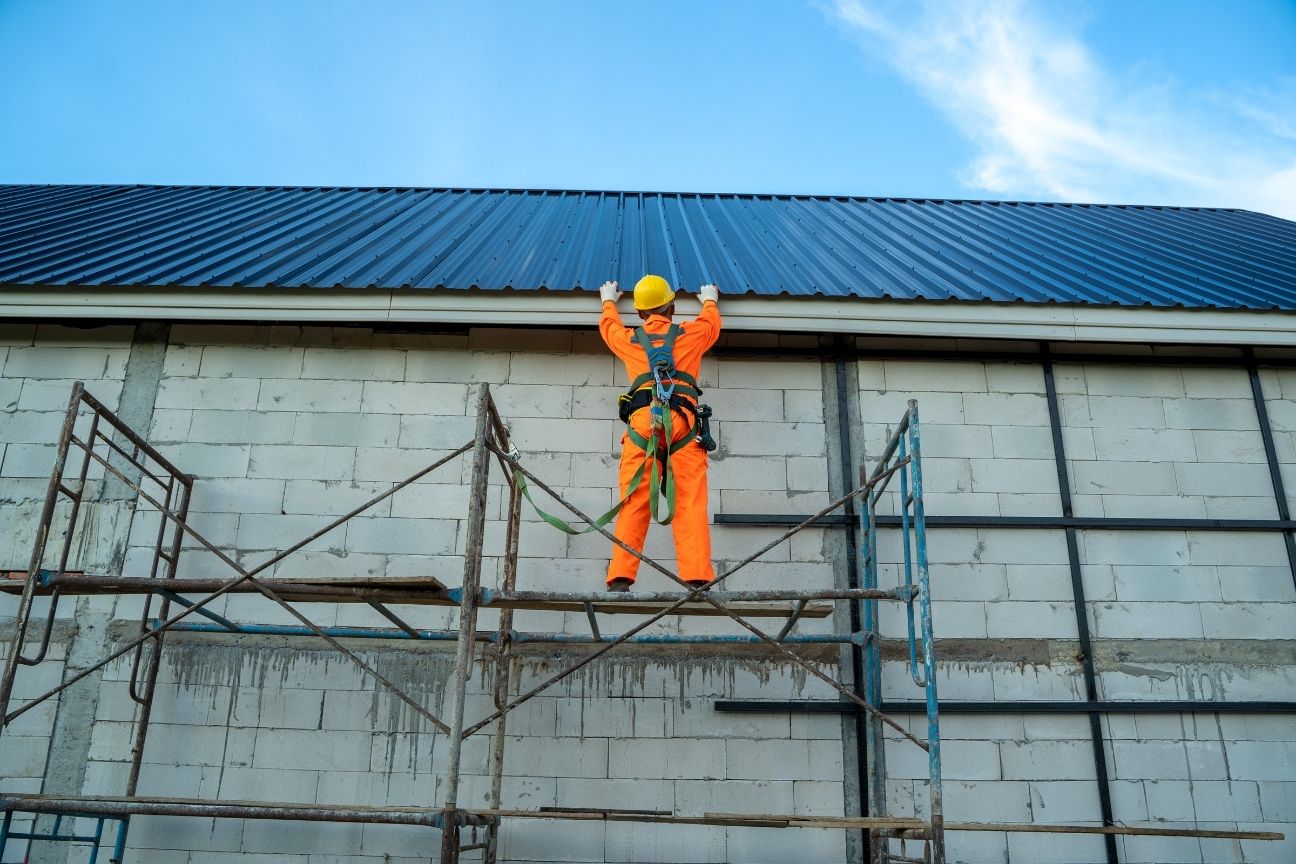Introduction
- Brief overview of the importance of lease preparation in foundation development.
- Define key terms: Key Lease Preparation Factors, Foundation Preparation, Site Development, and Construction Checklist.
1. Understanding Zoning Regulations
Zoning regulations play a crucial role in shaping lease agreements. They dictate how land can be used, which affects your foundation development plans. If you want to avoid costly delays or legal issues, understanding these laws is essential.
Researching Zoning Regulations
Begin by researching the specific zoning regulations for your property. You can usually find this information on your local government’s website. Search for zoning maps and ordinances relevant to your area. These documents will provide insights into permitted uses, height restrictions, and lot coverage.
Don’t skip this step. Knowing the zoning laws can influence your lease terms. You might have to negotiate changes if the existing regulations don’t align with your plans. For example, if your intended use is not allowed, you may face challenges in obtaining the necessary permits.
Importance of Compliance
Compliance with zoning regulations is non-negotiable for successful foundation development. Violating these laws can lead to fines, legal disputes, or even halting your project. Being aware of the rules helps ensure your lease agreement includes necessary contingencies.
For instance, clarify in the lease whether the property can be used for your intended purpose. Also, include terms related to possible rezoning efforts if needed. This way, you ensure that any changes to zoning can be addressed without significant setbacks.
The Path Forward
Understanding zoning regulations isn’t just about avoiding pitfalls; it’s also about seizing opportunities. Well-informed decisions lead to smoother development. When drafting your lease, make sure to reflect on how zoning affects your project timeline and budget.
In summary, thorough knowledge and compliance regarding zoning regulations are vital. They ensure your foundation development progresses without unnecessary barriers, keeping your project on track.
2. Assessment of Site Conditions
Assessing site conditions is crucial for successful foundation development. A comprehensive evaluation can prevent costly mistakes and ensure a solid start to your project. Here’s how to assess your site effectively.
Soil Quality
First, examine the soil quality. Good soil supports structures and absorbs water efficiently. Conduct soil tests to check for composition, compaction, and contamination. You may need a soil engineer to perform these tests. This analysis helps you understand if the site can handle your planned construction.
Drainage Systems
Next, review the drainage systems. Proper drainage prevents water accumulation, which can damage your foundation. Check if existing systems are effective or need upgrades. Identify areas where water tends to pool. Addressing these issues early can save time and money later on.
Existing Structures
Evaluate any existing structures on the site. They may conflict with your new plans. If they are structurally sound, you could utilize them. If not, consider demolition or renovation before beginning your project. Document their condition as part of your assessment.
Conducting a Thorough Site Analysis
To conduct a thorough site analysis, follow these steps:
- Gather a Team: Include engineers, geologists, and environmental consultants.
- Perform Site Visits: Visit the location multiple times. This helps in noticing changes over time.
- Use Technology: Leverage tools like drones and GIS mapping. They provide detailed views of the site.
- Review Historical Data: Investigate previous land use. This might reveal potential issues like contamination.
In summary, assessing site conditions is not just a box to check. It’s an essential part of planning for foundation development. By carefully evaluating soil quality, drainage systems, and existing structures, you set the groundwork for your project’s success.
3. Financial Considerations
When preparing a lease for foundation development, financial considerations are key. A solid budget estimation serves as the backbone of any project. Start by outlining the overall costs associated with your site development and foundation preparation. This includes:
- Land preparation expenses,
- Fees for permits, and
- Any potential legal costs.
Budget Estimation
Your budget should reflect more than just immediate expenses. Consider including:
- Unforeseen Costs: These may include environmental assessments or site remediation.
- Contingency Fund: It’s wise to allocate about 10% to 20% of your total estimate for unexpected expenses.
Also, evaluate financing options available to you:
- Will you fund the project through savings,
- Loans, or
- Investment partners?
Understanding your financial landscape early will help align your goals with your resources.
Cost Breakdown
Track expenses across various categories to gain clear visibility into your budget. Key categories include:
- Site Preparation Costs: This covers grading, excavation, and soil stabilization.
- Labor Costs: Research local labor rates to ensure accurate estimates.
- Material Costs: Keep in mind that prices for concrete, rebar, and other building materials can fluctuate.
- Permitting Fees: These costs can often catch you off guard, so don’t overlook them.
- Utility Connections: If your site requires new utility connections, include these in your budget.
Aligning Financial Plans with Project Goals
Once you have your detailed cost estimates, align them with your project goals. Here are some steps to consider:
- If your budget exceeds your financial capacity, think about adjusting your plans.
- Consider scaling back or postponing certain features.
Flexibility can save you from costly financial pitfalls down the line.
In summary, thorough financial planning and effective budget estimations are crucial steps in lease preparation for foundation development. Taking the time to detail these costs not only prepares you for success but also ensures you can confidently navigate any financial challenges that arise.
4. Lease Term and Conditions
Understanding lease terms and conditions is crucial for foundation development. A well-crafted lease impacts not just your initial plans but also long-term project viability.
Key Lease Terms to Evaluate
Start by examining the duration of the lease. This period must align with your project goals. A short lease may limit your ability to fully develop the site. Alternatively, a long-term lease provides stability but may lock you into unfavorable conditions later.
Next, look at renewal options. Some leases offer automatic renewals or beneficial terms for extending the lease. These provisions are crucial when planning for future developments. Always clarify what happens when a lease nears expiry.
Termination clauses also demand your attention. Understand under what circumstances either party can terminate the agreement. Unexpected terminations can quickly derail your project timeline and budget.
Impact on Foundation Development Timelines
Inefficient lease terms can cause significant delays in foundation development. If you’re locked into a lengthy negotiation over terms, your construction schedule will inevitably suffer. This often results in higher costs and wasted resources.
Moreover, ambiguous terms can lead to disputes with landlords. Such conflicts can stall progress, create delays, and even result in legal fees. Transparency in lease language is vital for smooth operations.
Utilities and Infrastructure Access
When planning foundation development, reliable access to utilities is critical. This includes essential services like water, electricity, and sewer systems. Without these utilities, construction can face serious delays.
The Impact of Utility Access
A site lacking utility access can disrupt project timelines significantly. For example, if your location requires extensive trenching for utility lines, this work can hold up the foundation development. Additionally, if utility connections are slow or unreliable, it may halt on-site activities altogether. Recognizing these factors early in the process is key.
Best Practices for Ensuring Infrastructure Readiness
To prevent utility-related delays, follow these best practices:
Conduct a Utility Inventory: Before signing a lease, determine what utilities are available on-site. Identify the providers for each service and their respective capacities.
Engage with Utility Providers: Communicate with local utility companies early in your project. Discuss your specific needs and timelines. This dialogue can help you understand any limitations or potential delays in utility access.
Schedule Infrastructure Inspections: If the site has existing utility connections, conduct thorough inspections. Look for signs of wear or damage that could affect service.
Prepare for Utility Upgrades: Depending on your project’s size, the existing utilities might not suffice. Plan for upgrades well in advance. This could involve improving capacity or even replacing aged infrastructure.
Document Everything: Keep accurate records of all communications and inspections regarding utility services. This documentation will be invaluable should any disputes arise later.
By understanding and addressing utility access before ground is broken, you set the stage for a smoother construction process. This proactive approach reduces risks and keeps your project on track while aligning with essential lease conditions.
6. Coordination with Local Authorities
Effective coordination with local authorities can make or break your foundation development project. It’s essential to secure the necessary permits and approvals well ahead of time. These permits ensure that your project meets local codes and regulations, thereby avoiding costly delays later.
Understanding the Role of Local Authorities
Local authorities play a crucial role in the foundation preparation process. They oversee zoning laws, building codes, and safety regulations. Engaging with these entities early not only helps clarify any requirements but also establishes a rapport that can ease future interactions. You’ll want to be on their good side; building trust can sometimes speed up the approval process.
Tips for Successful Coordination
Research Requirements: Start by reviewing the local government’s website or office for information on required permits. Each locality can differ significantly in its guidelines.
Schedule Pre-application Meetings: Before you submit any paperwork, consider setting up a meeting with key officials. This can help clarify any uncertainties and may save you from misunderstandings later.
Maintain Open Lines of Communication: Being proactive can smooth your path. Regularly check in with officials to get updates on your application status. Listen to any concerns they might have. Prompt responses can help resolve potential issues faster.
Document Everything: Keep a record of all communications and submitted documents. This practice not only provides transparency but can also assist in case any disputes arise.
Be Patient and Persistent: Approval processes can be slow. If you experience delays, follow up politely. Patience combined with consistent communication will go a long way.
By successfully navigating the landscape of local authorities, you can streamline your foundation preparation. Effective coordination mitigates risks and enhances your project’s potential for success. Remember, a well-prepared applicant often inspires confidence in local officials, making your development journey smoother.
7. Developing a Comprehensive Construction Checklist
Creating a construction checklist is essential for successful foundation development. This checklist ensures that you cover every critical aspect of the project. It serves as a roadmap that keeps everyone on track while fostering accountability.
Key Elements to Include
When developing your checklist, include the following key elements:
Project Milestones: List significant phases of your development, such as site preparation, foundation laying, and inspections. This helps in monitoring progress and maintaining momentum.
Compliance Checks: Ensure you have a section dedicated to zoning regulations and permit approvals. This avoids legal hiccups later in the project.
Utility Access: Include a review of utility connections. Confirm water, electricity, and other essential services are available and functioning.
Risk Management: Identify potential risks that could delay construction. This could range from inclement weather to supply chain issues. Addressing these proactively saves time and money.
Communication Protocol: Outline a plan for regular updates among all stakeholders. This enhances collaboration and keeps everyone informed of changes or obstacles.
Tools and Methods for Tracking
Using the right tools can significantly improve your checklist’s effectiveness. Consider these options:
Digital Project Management Tools: Applications like Trello or Asana allow you to create checklists and schedule tasks. They send reminders and help track progress in real time.
Spreadsheets: A simple spreadsheet can be a powerful tool. Use columns for tasks, deadlines, responsible parties, and completion status.
Mobile Apps: Many construction-specific apps allow you to manage your checklist on the go. This ensures that updates occur even when you’re out on site.
The Benefits of a Comprehensive Checklist
An effective construction checklist keeps your project organized and efficient. It minimizes oversight and enhances communication. A detailed checklist also helps ensure all lease factors are met before moving onto the next phase.
In short, a comprehensive construction checklist is not just a formality; it’s a necessity. It safeguards your investment and paves the way for successful foundation development. By anticipating challenges and maintaining consistency, you position your project for success.







